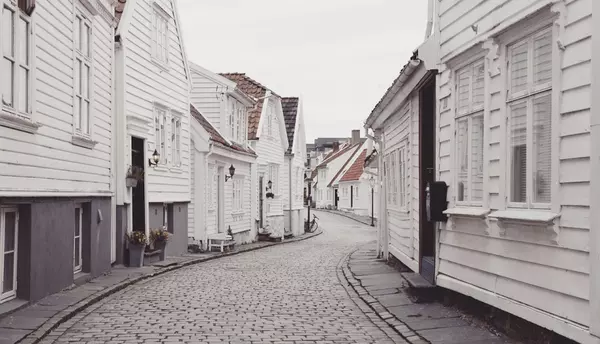The Truth About Turkish vs. Indian Oushak Rugs
An Educational Guide by Joey Sabb
with Commentary by Laura Hamilton McKee of L. Hamilton & Co.
This guide features insights from Joey Sabb, third-generation rug expert and the world’s leading producer of Turkish Oushaks, with commentary from Laura McKee, seasoned interior designer and owner of L. Hamilton & Co., a proud buyer and affiliate of Joey Sabb’s exclusive Turkish Oushak collection.


Joey Sabb: A Legacy Woven in Tradition
Joey Sabb is a third-generation rug purveyor with over 55 years of experience and a legacy rooted in Turkish1 craftsmanship. Best known for pioneering the ‘Happy Colored Oushak,’ he is also the world’s largest producer of these signature designs, created through a long-standing partnership with his weaver—built on trust, tradition, and a shared commitment to excellence.
What Is an Oushak Rug, Really?
“Oushak” refers to a weaving tradition that began in Uşak, Turkey. These rugs are admired for their soft palettes, refined texture, and timeless design. Whether in traditional or modern interiors, a genuine Oushak adds warmth and character. Today, however, many rugs labeled “Oushak” are made outside of Turkey—mass-produced in India, Afghanistan, or Pakistan using different materials, and methods. They may look similar in photos, but the quality difference becomes clear once you see or feel them. “A rug isn’t just a decor item—it’s the foundation of the room,” says Laura McKee. “It has to support everything else, visually and physically. That’s why quality matters.”



Indian, Afghan, & Pakistani-Made “Oushaks”: A Closer Look
India, Afghanistan, and Pakistan produce many rugs marketed as ‘Oushaks,’ but most are made with machine-spun wool and cotton foundations. While labeled as ‘handwoven,’ much of the weaving is done by machine, with only the finishing touches completed by hand.
Some use wool foundations and improved dyes, but these rugs are made for volume and can’t match the beautiful, muted tones of traditional Turkish rugs. Those soft, nuanced colors—achieved through natural dyeing methods and generations of expertise— simply don’t translate in large-scale production. Perhaps the biggest difference, though, lies in the weaving itself: authentic Turkish rugs are made using a special double knot (also known as the Ghiordes knot), which creates a denser, more durable weave. Unlike the single knot technique used in many other regions, the double knot holds up exceptionally well over time and is especially favored for high-traffic areas where resilience is key.

Another important distinction is the wool foundation. Unlike cotton, which tends to be more rigid, wool foundations offer a softer structure that gives the rug greater fluidity and warmth. This flexibility enhances the way the rug drapes and moves, subtly transmitting that softness into the design itself. The result is a rug with more character—something that simply can’t be achieved with stiffer cotton foundations.
“You can’t replicate a Turkish rug by copying a design,” says Laura. “The wool, dyes, knotting technique, and the lineage of the weavers—those are things you can’t fake.”
Why Turkish Oushaks Are Truly Exceptional
Authentic Turkish Oushaks are made from 100% Turkish sheep wool, hand-spun and dyed with organic plant-based pigments. The entire process is done by hand—no machines are involved. Even the fringes are 100% wool, a hallmark of authenticity, while many imitations use cotton to save time and cost.
Each rug is a reflection of patience, skill, and tradition. The result is a rug with depth, durability, and softness that only improves with time.
“Each rug in my collection is completely unique,” says Joey Sabb. “No two are the same. That’s the beauty of handmade work—it’s personal. It has soul.”
Joey’s collection includes both his signature Happy Colored Oushaks and elegant muted styles, all hand-knotted by Turkish artisans using time-honored methods.
“Joey’s rugs changed how I design rooms,” adds Laura. “They’re not just beautiful—they’re built to last. The weight, color, and texture are unmatched.”



Not All Are Alike
Many well-known brands and online retailers sell “Oushaks” without ever stocking them—drop-shipping directly from factories. While “handmade” is commonly used, the term is vague. To make an informed purchase, buyers should ask:
- Where is the rug made?
- Is the wool hand-spun or machine-spun?
- What is the foundation material?
- Are the dyes natural or synthetic?
- Can the rug be cleaned, repaired, and restored?
- Will it last for generations—or just a few years?
These questions help distinguish truly handmade, heirloom-quality rugs from mass-market lookalikes. At the end of the day, buying a rug is an act of trust. It’s not just about the product—it’s about the person or company behind it. Clear, honest answers only come from clear, honest sellers. When the details matter, so does the source.
Where to Find the Real Thing
Come see what makes these rugs so special—Joey Sabb’s Turkish Oushaks are available exclusively at L. Hamilton & Co. We specialize in heirloom-quality Turkish Oushaks—genuine, repairable, and made to last. Our curated inventory is the largest collection of authentic Turkish Oushaks in the region.
We also offer custom rug orders at no additional charge, with a typical turnaround of 3–6 months depending on size. These aren’t fast-fashion rugs—they’re lasting investments in tradition, beauty, and craftsmanship.
“This is slow design,” says Joey. “It takes time, but the result is something that will live with you—and last.”
Showroom Hours: 10–4 Mon – Thu • Call (850) 660-1121
Visit Us:
L. Hamilton & Co.
790 N County Hwy 393 Ste 2D
Santa Rosa Beach, FL 32459
Categories
Recent Posts











